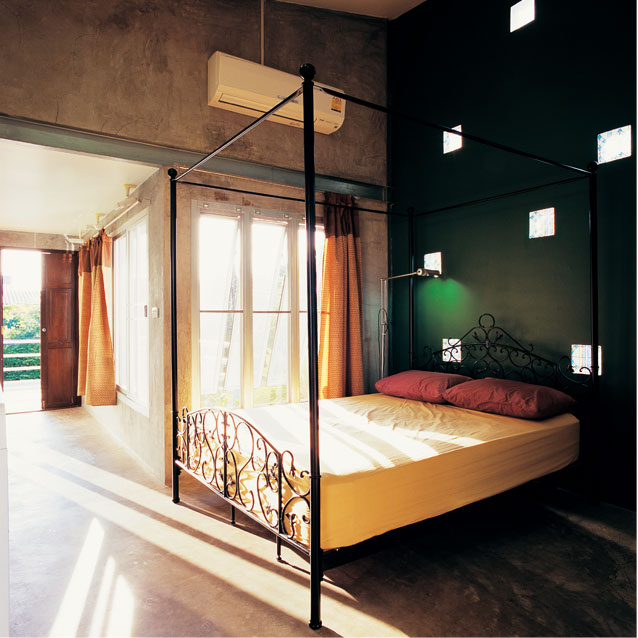
Two years ago, the three siblings of the Taiyuenyongsak family acquired a fifty year-old house in a ‘modernist’ Bangkok housing complex. The complex originally consisted of mass-produced and standardised houses, but most of these dwellings have been variously transformed over the span of five decades. Despite the dilapidated appearance of the house, the location is ideal and the community is inviting. It offers a sense of tranquility hard to find in the bustle of Bangkok. The owners, despite having bought the house because of its setting, strongly felt something could be done to turn the house into something entirely new.
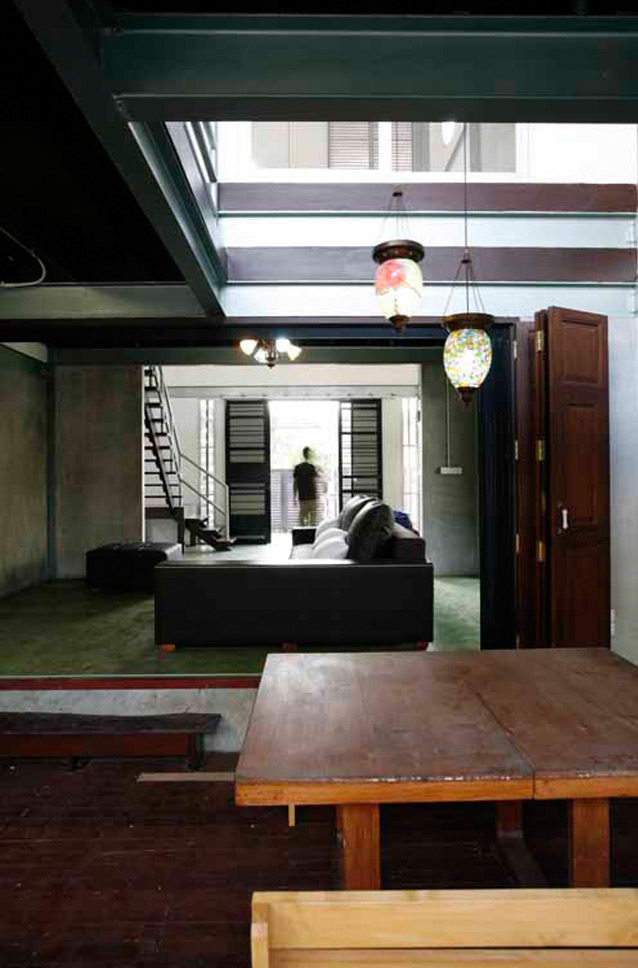
“We had a fluid vision of the spaces we needed and felt that the house could be transformed to accommodate those needs. We foresaw something more voluminous and airy.” The architect answered to these requirements and saw them as a productive challenges rather than limiting constraints. Trying to work within the existing structural framework of the house, the architect both extended and re-organised the spaces to offer a new type of spatial sequence and sense of volume. Compartmentalised spaces were penetrated and pierced through to give more light and natural ventilation. Areas that used to be individually closed-off are now joined and inter-connected to accommodate the individual life-styles of the inhabitants.
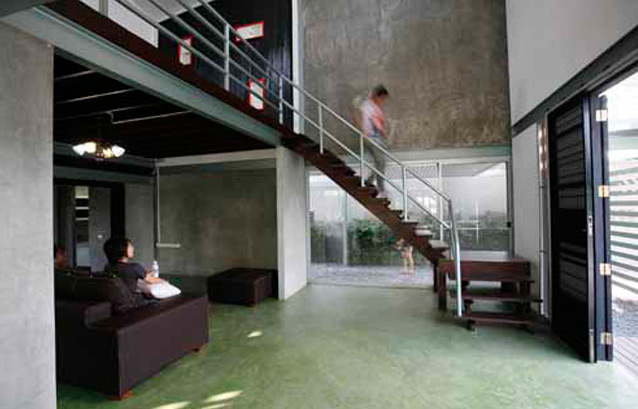
The footprint of the house was expanded to accommodate more spaces – the airy kitchen and another bedroom on the ground floor – while the rest of the walls were removed to create a better flow of light and air as well as improved sightlines. On the upper level, two bedrooms and common spaces were re-organised and re-configured to create a sense of relationship that is at once both private and public.
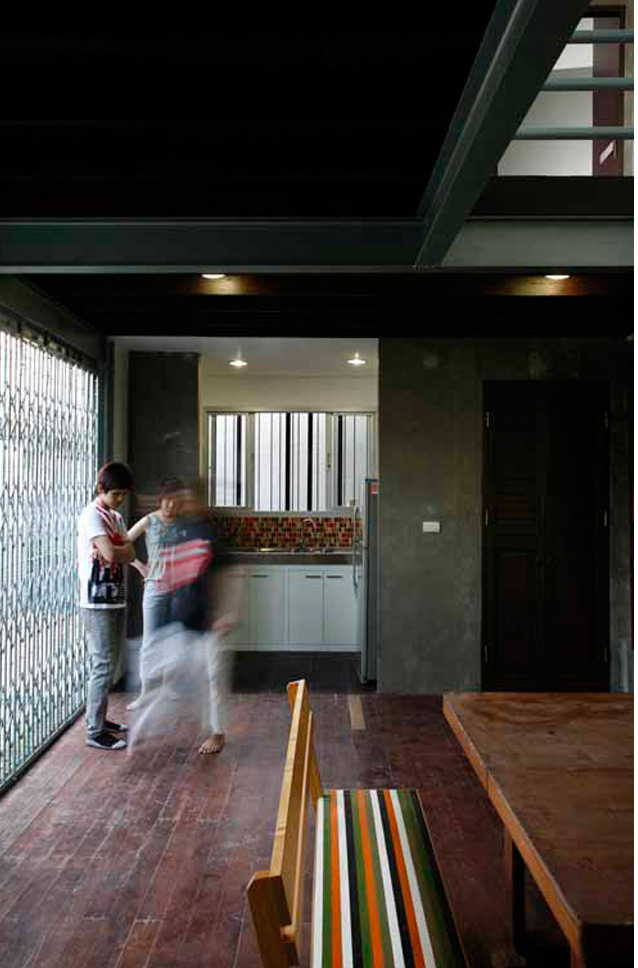
The structural framework of the house, however, has been left almost untouched. Supporting structural elements were added and joined only where needed, adding no complication to the construction process. The familiar and overtly traditional gable roof was split and raised to offer more ventilation and volume.
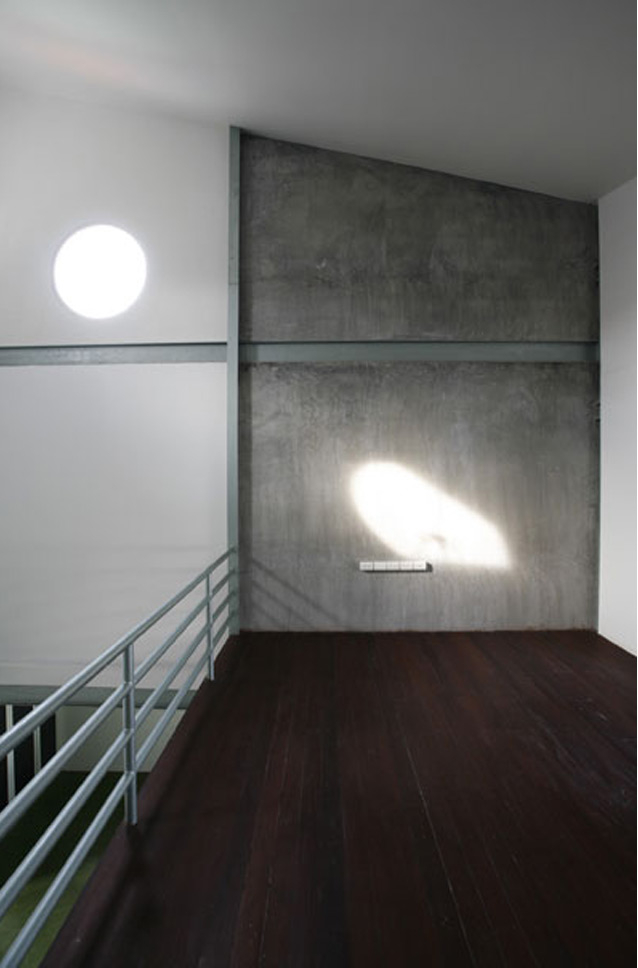
As it was to be a house that would grow with them, the owners also foresaw future changes, either through new needs, additional family members or changing life styles. They wanted the house to be flexible enough to be shaped and re-shaped by their constantly changing lives. The true measure of a building’s quality, in this sense, is its capacity to respond to both foreseen and unforeseen developments. Being able to respond to unexpected circumstances means that the building has not been so rigidly attuned to pre-established norms. “It may not look like other houses, but it answers our callings, and allow us to transform,” the owners add. And as the building’s performance is the key to its identity, architecture’s performative labour has no end. It is a task that continually presents itself anew.
For Full-text see Issue# 10 of Habitus Magazine
ARCHITECT
LAAN DESIGN (Kitchai Jitkhajornwanich, Duangporn Jitkhajornwanich)
(66) 81 710 2707
PHOTOGRAPHER
Pirak Anurakyawachon

